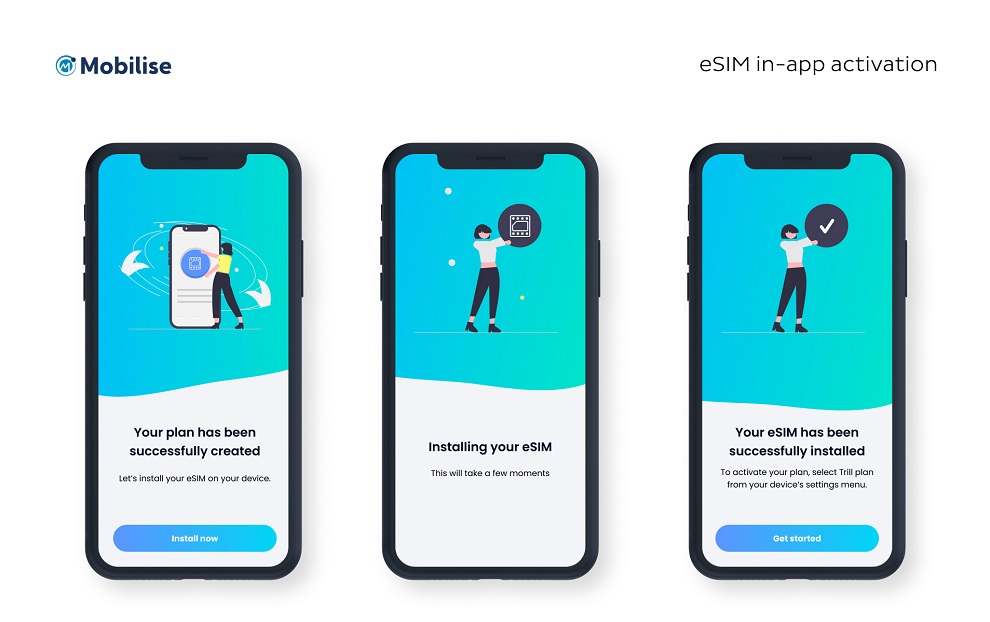According to the GSMA, by 2030, 76 per cent of all smartphone connections will be enabled by eSIM. As consumers embrace the convenience and flexibility it offers, it begs the question — is eSIM now an expectation? Here, Hamish White, CEO of eSIM software provider Mobilise, explains why mobile virtual network operators (MVNOs) need to offer eSIM as standard.
MVNOs have been a significant player in the telecommunications industry for over two decades and have experienced rapid growth in recent years. The market has ballooned to $81.42 billion in 2024 and is projected to double to $167.7 billion by 2034. This expansion is largely fuelled by a wave of non-telco brands entering the mobile service provider space, leading a new era of innovation, offering greater choice for consumers and creating a more fiercely competitive market.
An extra layer of competition
Historically, launching an MVNO was a challenging task due to the hefty budget required to compete with established mobile network operator (MNO) brands, regulatory hurdles and substantial upfront investments. However, with established MNOs increasingly reliant on MVNO revenue, the landscape has evolved. Launching mobile services has also become a whole lot easier, thanks to the arrival of the consumer eSIM back in 2016.
eSIM technology streamlines consumer experiences, reducing launch times and operational costs for digital-first MVNOs while offering consumers greater flexibility in switching providers. The rise of eSIM software has made becoming an MVNO a simpler process, but it’s also added an extra layer of competition to the market by enabling completely non-telco brands to launch connectivity services.
Greater competition raises customer expectations by providing more choices and easy comparisons. In telecoms, service providers must innovate and constantly ensure they are offering the latest technology. As more providers adopt eSIM technology, customers become familiar with its benefits — convenience, flexibility and completely remote onboarding. This widespread availability sets a new norm, meaning customers expect eSIM options from all possible providers to enjoy the same seamless experience.
Integrable eSIM software development kits, while useful for MVNOs, have created an opportunity for non-telcos to launch telco services quickly. We’re seeing a sharp rise in the travel eSIM market that, for example, is set to grow by 410 per cent by 2028 and will make up a significant portion of the overall eSIM market. For MVNOs, this means that there’s more competition and a greater need for differentiation to ensure success.
eSIM expectations
Adoption and awareness of eSIM is on the rise. Since June 2023, 400 MNOs, MVNOs and roaming providers have offered smartphone eSIM services globally according to GSMA Intelligence, which is up from just 45 operators back in 2018.
Consumer awareness is higher than ever, and the penetration of eSIM-capable devices is too. With Apple having already made the switch to eSIM-only iPhones in the US in September 2022, there’s a further the shift rumoured for this year, where the eSIM-only Apple models may hit European markets from September 2024. Apple — the device manufacturer with the highest market share — has left its customers with no choice but to adopt eSIM, and therefore a service provider that offers it.
For MVNOs, the combination of Apple’s eSIM-only shift and a significantly higher level of competition from travel eSIM apps has made eSIM implementation an absolute essential.
Meeting this new expectation
Whether you’re an already established MVNO, or a new operator looking to launch, eSIM technology is undoubtedly an expected service in 2024. But how can you launch the technology without a hefty time or financial investment?
Mobilise offers a range of eSIM solutions. If you’re an established MVNO with a comprehensive technology stack, eSIM SDK offers in-app eSIM activation in a kit that sits seamlessly on top of your existing mobile application. It’s suitable for any industry, allowing MVNOs to launch eSIM capabilities in a matter of weeks.
If you don’t have an existing app, Mobilise additionally offers a full eSIM solution — eSIM as a Service — designed with customers and their needs in mind. eSIM services come integrated into the application, allowing end-users to take full control of their subscription, activate their mobile plan in just one tap and complete their onboarding entirely remotely through electronic Know Your Customer (eKYC) processes.
eSIM is here, awareness is becoming more and more commonplace and device manufacturers are driving the shift. eSIM is no longer a nice-to-have add-on, but an expected service that MVNOs need to adopt in order to remain competitive moving forward.












